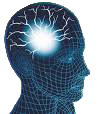Modern man has a tendency to slouch. It is likely our ancestors would have been moving constantly as they foraged for food, modern man on the other hand spends the vast majority of his time in static positions — either sitting or standing — when the tendency to slump and sag is just too great.
The trouble is we are fighting against gravity the whole time. For the many of us it only takes about ten minutes of sitting or standing before the ‘postural’ muscles in the spine and abdomen that hold us up start to get tired, and we start to slump.
Most of us know from experience that sitting hunched in front of a computer or driving wheel can lead to a stiff, painful back and shoulders. But poor posture can also TRIGGER HEADACHES. If you find you suffer headaches while at work, it might be the way you sit, rather than the stress of your workload that’s the source of the problem.
As previously mentioned, when sitting at a desk for longer periods, the muscles that support the body, neck and head start to tire and the spine starts to slump. The tendency is then to compensate for this by sticking the neck and chin forward to keep the eyes in a good position thus making sure we can still see the screen (i.e. keeping the eye line horizontal).
The resultant tension in the muscles at the base of the skull, caused by the spine rounding and the neck sticking forward, can pinch the nerves in that area, leading to something called cervicogenic headache. It tends to be characterised by pain that starts at the back of the head/top of the neck and travels up and over the scalp often ending just above the forehead.
So if you always seem to get headaches whilst sitting try the following;
1) Check if altering your posture makes a difference.
2) Ensure you have a good chair that allows you to sit up relatively straight without too much effort.
3) Take regular breaks to give your muscles a rest/change of position.
4) Ask an Osteopath or Alexander technique teacher to check your posture.
5) Strengten your postural muscles with exercises prescribed by a suitable specialist (such as an Osteopath or Physiotherapist) so they are more resilient and can resist the slumping tendency.
6) If possible get an ergonomic assessment of your workstation.

